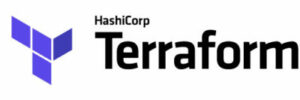Terraform Engineering
Terraform Engineering
current course dates can be found at the bottom of this page … company training available on request!
Course description
The first day of the Terraform Engineering course contains the same content as the Terraform Essentials course. The second day focuses on the practical integration of Terraform into production environments. Based on this requirement, advanced functionalities of Terraform will be discussed and also the ecosystem of helpful tools and concepts around Terraform and pipelines will be worked out by means of practical exercises. This course is particularly suitable for participants who want to use/implement Terraform productively.
Our trainers have excellent training skills and Terraform project experience.
We offer open trainings in Hamburg, Hanover and Düsseldorf. We are also happy to conduct training at your location.
Course objectives
In this course, you will learn to:
- Understand benefits of using Terraform to create cloud resources
- Understand Terraform basic commands and functionality
- Understand and apply language concepts to efficiently write readable and reusable code
- Gain hands-on experience working with Terraform
- Understand and use advanced Terraform concepts
- Helpful open source tools when used in pipelines/git-based workflows
- Try out advanced terraform commands and coding
Prerequisites
We recommend that attendees of this course have:
- Basic understanding of general networking concepts and multi-layer architectures.
- Understanding of cloud computing concepts
- Basic knowledge of basic AWS services (VPC, EC2, S3)
- Basic knowledge of software development and system administration (git, Bash, advanced editor)
- Basic understanding of git-based workflows/pipelines
Course duration / Price
- 2 days / € 1500.00 (excl. tax) per person (DE)
Course outline
- Introduction
- Basic commands
- Core concepts 1 (State, Resources, Variables)
- Coding block 1 – Practical exercise
- Core concepts 2 (References, Outputs, Naming, Functions)
- Coding block 2 – Practical exercise
- Core Concepts 3 (External Resources, Loops & If/Else, Locals, Meta Arguments)
- Coding Block 3 – Practical Exercise
- Reusable Code: Modules
- Quiz, outlook and certification
- CI/CD Concepts 1 (Remote State, Local Tooling, Debugging, Testing)
- Coding Block 1 – Practical Exercise
- CI/CD Concepts 2 (Custom Modules, Pipeline Tooling, Advanced CLI)
- Coding block 2 – Practical exercise
- CI/CD Concepts 3 (Authentication, Dynamics, Loops, Templating)
- Coding block 3 – Practical exercise
- Terraform Top20 Good Practices
- Quiz, Outlook
IMPORTANT: Please bring your notebook (Windows, Linux or Mac) to our trainings. If this is not possible, please contact us in advance.
The practical exercises are performed in prepared working environments available via web browser – no software needs to be installed. The course materials are in English, the trainer’s course language is German.








